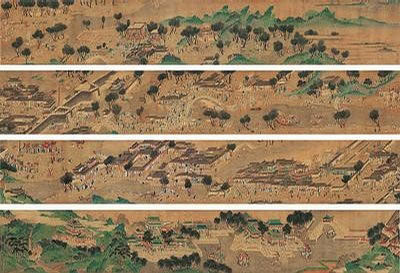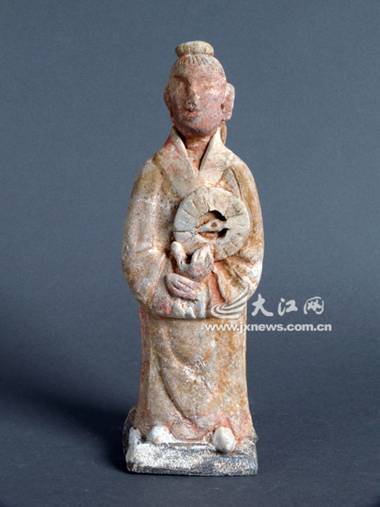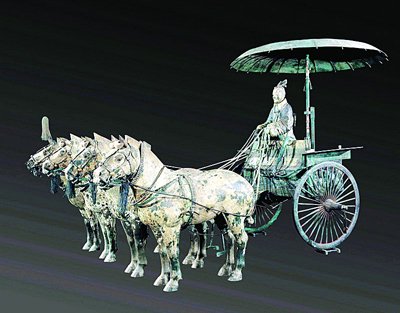Relics of China
A Riverside Scene at Qingming Festival
Venue: China Pavilion
A Riverside Scene at Qingming Festival by Ming Dynasty painter Qiu Ying (1494? - 1552), is now being displayed at Shanghai Expo. It is an imitation of Along the River During the Qingming Festival, by Zhang Zeduan (11th-12th century) during the Northern Song Dynasty (960–1127). The painting depicts the prosperity and liveliness of the Song people during the Qingming Festival (also known as Tomb Sweeping Day). The festival takes place every year on April 5. The painting is nearly ten meters long, depicting more than 2,000 people. Due to its fragile nature, the painting will only be displayed for one month during the Expo.
 |
|
Along the River During the Qingming Festival painted by Zhang Zeduan (11th-12th century). |
Pottery figurine of a man holding a compass
Venue: China Pavilion
The compass depicted in this figurine is the earliest compass depicted in pottery ware unearthed in China to date; the figurine dates back to the Song Dynasty (960 – 1279). The compass as we know it today has its origins in this time period.
 |
|
Pottery figurine of a man holding a compass |
No.1 Bronze Chariot and Horse
Venue: China Pavilion
Unearthed near the mausoleum of Emperor Qin Shihuang (259 – 210 B.C.), this bronze chariot and horse sculpture is one of the centerpieces of the Terracotta Army of the Qin Dynasty (221– 206 B.C.). Although the piece was buried underground for over 2,000 years, it is in mostly functional condition. The sculpture has a companion appropriately referred to as the No. 2 Bronze Chariot and Horse. After the first terracotta warriors were unearthed about 30 years ago, the site of the excavation has received more than 60 million visitors and is called "the eighth wonder of the world."
 |
|
No.1 Bronze Chariot and Horse |
 0
0 







Go to Forum >>0 Comments